A MODWT-Based Algorithm for the Identification and Removal of Jumps/Short-Term Distortions in Displacement Measurements Used for Structural Health Monitoring
Abstract
:1. Introduction
2. Theory
2.1. Nonlinear Phase-Demodulation Procedure
2.2. Theory of the Multiresolution Analysis for MODWT Coefficients
3. Proposed MODWT-Based Algorithm
4. Experimental Results
5. Conclusions
Author Contributions
Funding
Conflicts of Interest
References
- U.S. Department of Transportation, Federal Highway Administration. Status of the Nation’s Highways, Bridges, and Transit Conditions and Performance Report, Chapter 7–Capital Investment Scenarios–Highways, 23rd Ed. Available online: https://www.fhwa.dot.gov/policy/23cpr/highlights.cfm#conditions-and-performance-of-the-system (accessed on 14 September 2021).
- Montuori, A.; Luzi, G.; Bignami, C.; Gaudiosi, I.; Stramondo, S.; Crosetto, M.; Buongiorno, M.F. The Interferometric Use of Radar Sensors for the Urban Monitoring of Structural Vibrations and Surface Displacements. IEEE J. Sel. Top. Appl. Earth Obs. Remote Sens. 2016, 9, 3761–3776. [Google Scholar] [CrossRef]
- Castellano, A.; Fraddosio, A.; Martorano, F.; Mininno, G.; Paparella, F.; Piccioni, M.D. Structural Health Monitoring of a Historic Masonry Bell Tower by Radar Interferometric Measurements. In Proceedings of the IEEE Workshop on Environmental, Energy, and Structural Monitoring Systems (EESMS), Salerno, Italy, 21–22 June 2018; pp. 1–6. [Google Scholar]
- Azzara, R.M.; Girardi, M.; Iafolla, V.; Lucchesi, D.M.; Padovani, C.; Pellegrini, D. Ambient vibrations of age-old masonry towers: Results of long-term dynamic monitoring in the historic centre of Lucca. Int. J. Archit. Herit. 2019, 15, 5–21. [Google Scholar] [CrossRef] [Green Version]
- Barsocchi, P.; Bartoli, G.; Betti, M.; Girardi, M.; Mammolito, S.; Pellegrini, D.; Zini, G. Wireless sensor networks for continuous structural health monitoring of historic masonry towers. Int. J. Archit. Herit. 2021, 15, 22–44. [Google Scholar] [CrossRef]
- Akbar, M.; Akbar, S.J. Dynamic monitoring of bridges: Accelerometer vs microwave radar interferometry (IBIS-S). J. Phys. Conf. Ser. 2021, 1882, 012124. [Google Scholar]
- Sivasuriyan, A.; Vijayan, D.S.; Górski, W.; Wodzyński, Ł.; Vaverková, M.D.; Koda, E. Practical Implementation of Structural Health Monitoring in Multi-Story Buildings. Buildings 2021, 11, 263. [Google Scholar] [CrossRef]
- Romeo, F.; Di Re, P.; Ciambella, J.; Lofrano, E. Structural analysis and health monitoring of twentieth-century cultural heritage: The Flaminio Stadium in Rome. Smart Struct. Syst. 2021, 27, 285–303. [Google Scholar]
- Kot, P.; Muradov, M.; Gkantou, M.; Kamaris, G.S.; Hashim, K.; Yeboah, D. Recent Advancements in Non-Destructive Testing Techniques for Structural Health Monitoring. Appl. Sci. 2021, 11, 2750. [Google Scholar] [CrossRef]
- Rice, J.A.; Gu, C.; Li, C.; Guan, S. A radar-based sensor network for bridge displacement measurements. In Sensors and Smart Structures Technologies for Civil, Mechanical, and Aerospace Systems 2012; SPIE: Bellingham, WA, USA, 2012. [Google Scholar]
- Guan, S.; Rice, J.A.; Li, C.; Li, Y.; Wang, G. Structural displacement measurements using DC-coupled radar with an active transponder. Struct. Control Health Monit. 2017, 24, e1909. [Google Scholar] [CrossRef]
- Guan, S.; Bridge, J.A.; Li, C.; DeMello, N.J. Smart Radar Sensor Network for Bridge Displacement Monitoring. J. Bridge Eng. 2018, 24, 04018102. [Google Scholar] [CrossRef]
- Cardillo, E.; Li, C.; Caddemi, A. Vital sign detection and radar self-motion cancellation through clutter identification. IEEE Trans. Microw. Theory Tech. 2021, 69, 1932–1942. [Google Scholar] [CrossRef]
- Li, C.; Lubecke, V.M.; Boric-Lubecke, O.; Lin, J. Sensing of life activities at the human-microwave frontier. IEEE J. Microw. 2021, 1, 66–78. [Google Scholar] [CrossRef]
- Rodriguez, D.; Wang, J.; Li, C. Spoofing attacks to radar motion sensors with portable RF devices. In Proceedings of the IEEE MTT-S Radio and Wireless Symposium (RWS), San Diego, CA, USA, 17–22 January 2021; pp. 73–75. [Google Scholar]
- Nallabolu, P.; Zhang, L.; Hong, H.; Li, C. Human Presence Sensing and Gesture Recognition for Smart Home Applications with Moving and Stationary Clutter Suppression Using a 60-GHz Digital Beamforming FMCW Radar. IEEE Access 2021, 9, 72857–72866. [Google Scholar] [CrossRef]
- Feng, C.; Jiang, X.; Jeong, M.G.; Hong, H.; Fu, C.H.; Yang, X.; Wang, E.; Zhu, X.; Liu, X. Multitarget Vital Signs Measurement with Chest Motion Imaging Based on MIMO Radar. IEEE Trans. Microw. Theory Tech. 2021, 69, 4735–4747. [Google Scholar] [CrossRef]
- Ren, W.; Qi, F.; Foroughian, F.; Kvelashvili, T.; Liu, Q.; Kilic, O.; Long, T.; Fathy, A.E. Vital Sign Detection in Any Orientation Using a Distributed Radar Network via Modified Independent Component Analysis. IEEE Trans. Microw. Theory Tech. 2021, 69, 4774–4790. [Google Scholar] [CrossRef]
- Michel, C.; Keller, S. Advancing Ground-Based Radar Processing for Bridge Infrastructure Monitoring. Sensors 2021, 21, 2172. [Google Scholar] [CrossRef] [PubMed]
- Miccinesi, L.; Beni, A.; Pieraccini, M. Multi-monostatic interferometric radar for bridge monitoring. Electronics 2021, 10, 247. [Google Scholar] [CrossRef]
- Rodrigues, D.V.Q.; Li, C. A review on low-cost microwave Doppler radar systems for structural health monitoring. Sensors 2021, 21, 2612. [Google Scholar] [CrossRef]
- Rodrigues, D.V.Q.; Zuo, D.; Tang, Z.; Wang, J.; Gu, C.; Li, C. Adaptive displacement calibration strategies for field structural health monitoring based on Doppler radars. IEEE Trans. Instrum. Meas. 2020, 69, 7813–7824. [Google Scholar] [CrossRef]
- Rodrigues, D.V.Q.; Zuo, D.; Li, C. Wind-induced displacement analysis for a traffic signal structure based on a low-cost Doppler radar array. IEEE Trans. Instrum. Meas. 2021, 70, 6503909. [Google Scholar] [CrossRef]
- Rodrigues, D.V.Q.; Tang, Z.; Wang, J.; Zuo, D.; Li, C. Structural Health Monitoring of a Traffic Signal Support Structure Based on 5.8-GHz Doppler Radar with Median Filter and Revised Circle Fitting. In Proceedings of the IEEE Radio and Wireless Symposium (RWS), San Antonio, TX, USA, 26–29 January 2020; pp. 187–190. [Google Scholar]
- Sony, S.; Sadhu, A. Multivariate empirical mode decomposition–based structural damage localization using limited sensors. J. Vib. Control 2021, in press. [Google Scholar] [CrossRef]
- Hou, S.; Dong, B.; Fan, J.; Wu, G.; Wang, H.; Han, Y.; Zhao, X. Variational Mode Decomposition Based Time-Varying Force Identification of Stay Cables. Appl. Sci. 2021, 11, 1254. [Google Scholar] [CrossRef]
- Li, Y.; Lin, J.; Niu, G.; Wu, M.; Wei, X. A Hilbert–Huang Transform-Based Adaptive Fault Detection and Classification Method for Microgrids. Energies 2021, 14, 5040. [Google Scholar] [CrossRef]
- Zhao, Y.; Cui, H.; Huo, H.; Nie, Y. Application of Synchrosqueezed Wavelet Transforms for Extraction of the Oscillatory Parameters of Subsynchronous Oscillation in Power Systems. Energies 2018, 11, 1525. [Google Scholar] [CrossRef] [Green Version]
- Bernardini, L.; Carnevale, M.; Collina, A. Damage Identification in Warren Truss Bridges by Two Different Time–Frequency Algorithms. Appl. Sci. 2021, 11, 10605. [Google Scholar] [CrossRef]
- Eren, C.; Karamzadeh, S.; Kartal, M. Signal Processing Techniques for Human Vital Signs Sensing by Short Range Radar. In Proceedings of the 2020 28th Signal Processing and Communications Applications Conference (SIU), Gaziantep, Turkey, 5–7 October 2020; pp. 1–4. [Google Scholar]
- Dong, R.; Cai, D.; Ikuno, S. Motion Capture Data Analysis in the Instantaneous Frequency-Domain Using Hilbert-Huang Transform. Sensors 2020, 20, 6534. [Google Scholar] [CrossRef] [PubMed]
- Ricci, R.; Pennacchi, P. Diagnostics of gear faults based on EMD and automatic selection of intrinsic mode functions. Mech. Syst. Signal Process. 2011, 25, 821–838. [Google Scholar] [CrossRef] [Green Version]
- Kopsinis, Y.; McLaughlin, S. Investigation and performance enhancement of the empirical mode decomposition method based on a heuristic search optimization approach. IEEE Trans. Signal Process. 2008, 56, 1–13. [Google Scholar] [CrossRef]
- Hong, H.; Wang, X.; Tao, Z. Local integral mean-based sifting for empirical mode decomposition. IEEE Signal Process. Lett. 2009, 16, 841–844. [Google Scholar] [CrossRef]
- Li, C.; Wang, X.; Tao, Z.; Wang, Q.; Du, S. Extraction of time varying information from noisy signals: An approach based on the empirical mode decomposition. Mech. Syst. Signal Process. 2011, 25, 812–820. [Google Scholar] [CrossRef]
- Daubechies, I.; Lu, J.; Wu, H.-T. Synchrosqueezed wavelet transforms: An empirical mode decomposition-like tool. Appl. Comput. Harmon. Anal. 2011, 30, 243–261. [Google Scholar] [CrossRef] [Green Version]
- Tary, J.B.; Baan, M.V.D. Attenuation estimation using high resolution time–frequency transforms. Digit. Signal Process. 2017, 60, 46–55. [Google Scholar] [CrossRef]
- Auger, F.; Flandrin, P. Time-frequency reassignment and synchrosqueezing: An overview. IEEE Signal Process. Mag. 2013, 30, 32–41. [Google Scholar] [CrossRef] [Green Version]
- Qin, S.; Zhou, S.; Zhu, T.; Zhu, S.; Li, J.; Zheng, Z.; Qin, S.; Pan, C.; Tang, J. Sinusoidal Noise Removal in PD Measurement Based on Synchrosqueezing Transform and Singular Spectrum Analysis. Energies 2021, 14, 7967. [Google Scholar] [CrossRef]
- Chen, H.; Lu, L.; Xu, D.; Kang, J.; Chen, X. The Synchrosqueezing Algorithm Based on Generalized S-transform for High-Precision Time-Frequency Analysis. Appl. Sci. 2017, 7, 769. [Google Scholar] [CrossRef] [Green Version]
- Hu, Y.; Tu, X.; Li, F.; Meng, G. Joint High-Order Synchrosqueezing Transform and Multi-Taper Empirical Wavelet Transform for Fault Diagnosis of Wind Turbine Planetary Gearbox under Nonstationary Conditions. Sensors 2018, 18, 150. [Google Scholar] [CrossRef] [PubMed] [Green Version]
- Daubechies, I.; Wang, Y.G.; Wu, H.-T. Conceft: Concentration of frequency and time via a multitapered synchrosqueezed transform. Philos. Trans. R. Soc. A 2016, 374, 20150193. [Google Scholar] [CrossRef]
- Bruni, V.; Tartaglione, M.; Vitulano, D. On the time-frequency reassignment of interfering modes in multicomponent FM signals. In Proceedings of the 26th European Signal Processing Conference (EUSIPCO), Rome, Italy, 3–7 September 2018; pp. 722–726. [Google Scholar]
- Gençay, R.; Selçuk, F.; Whitcher, B.J. An Introduction to Wavelets and Other Filtering Methods in Finance and Economics; Academic Press: San Diego, CA, USA, 2001. [Google Scholar]
- Lilly, J.M.; Olhede, S.C. Higher-Order Properties of Analytic Wavelets. IEEE Trans. Signal Process. 2009, 57, 146–160. [Google Scholar] [CrossRef] [Green Version]
- Deléchelle, E.; Lemoine, J.; Niang, O. Empirical mode decomposition: An analytical approach for sifting process. IEEE Signal Process. Lett. 2005, 12, 764–767. [Google Scholar] [CrossRef] [Green Version]
- Park, B.-K.; Boric-Lubecke, O.; Lubecke, V.M. Arctangent demodulation with DC offset compensation in quadrature Doppler radar receiver systems. IEEE Trans. Microw. Theory Tech. 2007, 55, 1073–1079. [Google Scholar] [CrossRef]
- Guan, S.; Rice, J.A.; Li, C.; Gu, C. Automated DC offset calibration strategy for structural health monitoring based on portable CW radar sensor. IEEE Trans. Instrum. Meas. 2014, 63, 3111–3118. [Google Scholar] [CrossRef]
- Percival, D.B.; Walden, A.T. Wavelet Methods for Time Series Analysis. Cambridge Series in Statistical and Probabilistic Mathematics; Cambridge University Press: New York, NY, USA, 2000. [Google Scholar]
- Percival, D.B. Analysis of Geophysical Time Series Using Discrete Wavelet Transforms: An Overview. In Nonlinear Time Series Analysis in the Geosciences; Lecture Notes in Earth Sciences; Donner, R.V., Barbosa, S.M., Eds.; Springer: Berlin/Heidelberg, Germany, 2008; Volume 112. [Google Scholar]
- Polanco-Martínez, J.M.; Abadie, L.M. Analyzing Crude Oil Spot Price Dynamics versus Long Term Future Prices: A Wavelet Analysis Approach. Energies 2016, 9, 1089. [Google Scholar] [CrossRef] [Green Version]
- Barroso-García, V.; Gutiérrez-Tobal, G.C.; Gozal, D.; Vaquerizo-Villar, F.; Álvarez, D.; del Campo, F.; Kheirandish-Gozal, L.; Hornero, R. Wavelet Analysis of Overnight Airflow to Detect Obstructive Sleep Apnea in Children. Sensors 2021, 21, 1491. [Google Scholar] [CrossRef] [PubMed]
- Shams, M.A.; Anis, H.I.; El-Shahat, M. Denoising of Heavily Contaminated Partial Discharge Signals in High-Voltage Cables Using Maximal Overlap Discrete Wavelet Transform. Energies 2021, 14, 6540. [Google Scholar] [CrossRef]
- Yang, D.-M. The Detection of Motor Bearing Fault with Maximal Overlap Discrete Wavelet Packet Transform and Teager Energy Adaptive Spectral Kurtosis. Sensors 2021, 21, 6895. [Google Scholar] [CrossRef] [PubMed]
- Niven, I.; Zuckerman, H.S.; Montgomery, H.L. An Introduction to the Theory of Numbers; John Wiley & Sons, Inc.: Hoboken, NJ, USA, 1991. [Google Scholar]
- Hardy, G.H.; Wright, E.M. An Introduction to the Theory of Numbers; Oxford University Press: New York, NY, USA, 2008. [Google Scholar]
- Lacerda, J.C.A. Praticando a Aritmética; XYZ Editora: Rio de Janeiro, Brazil, 2018. [Google Scholar]
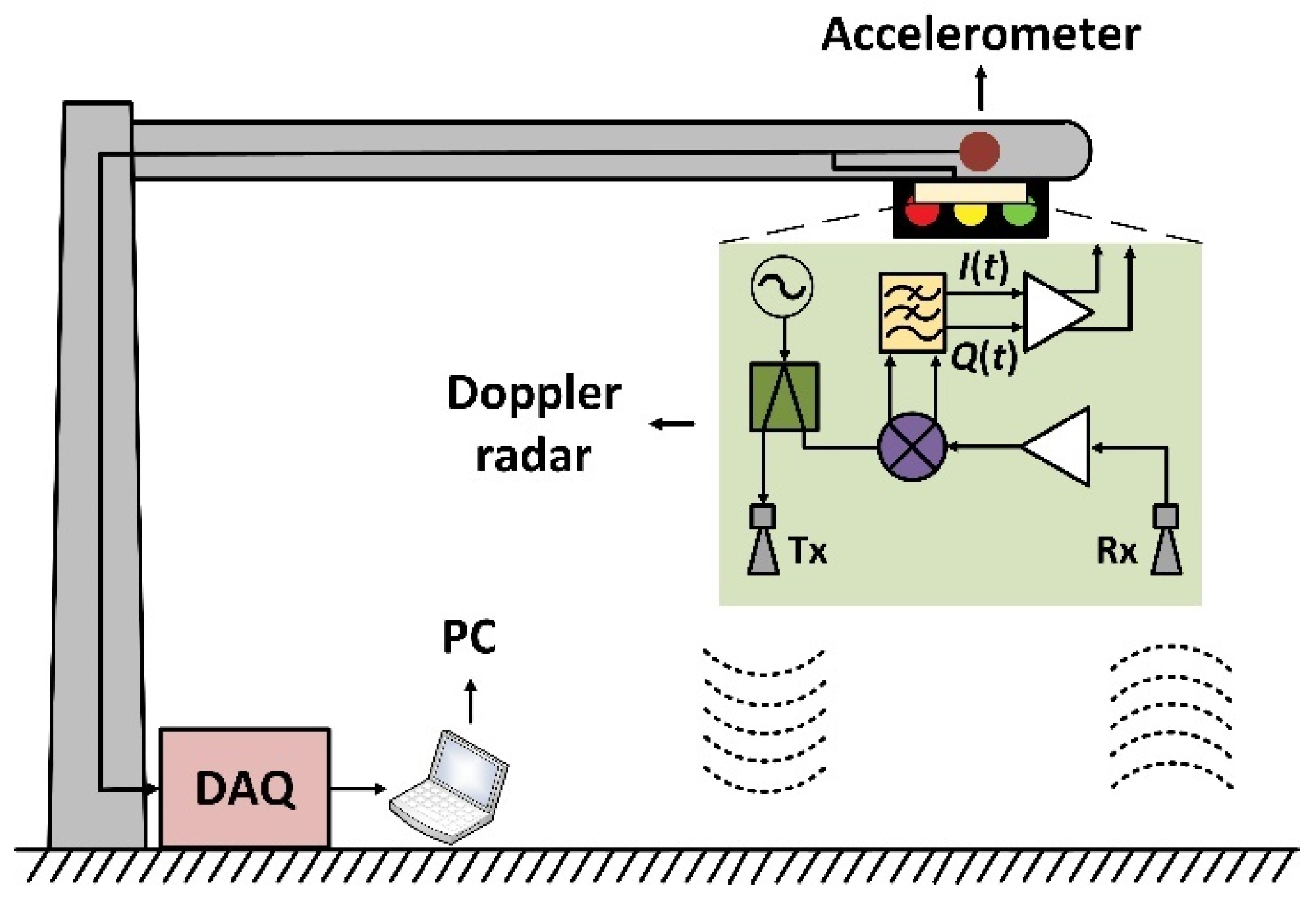

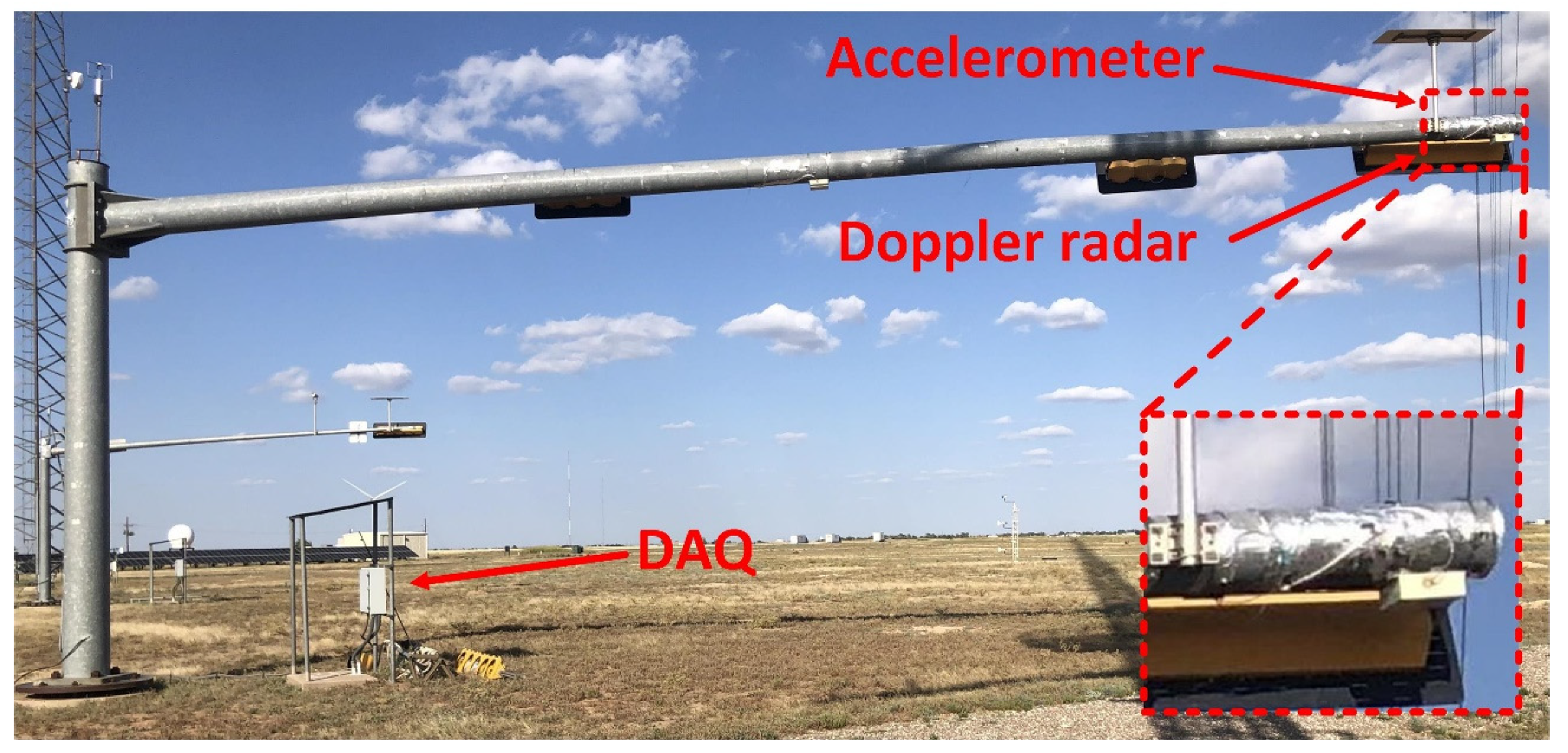
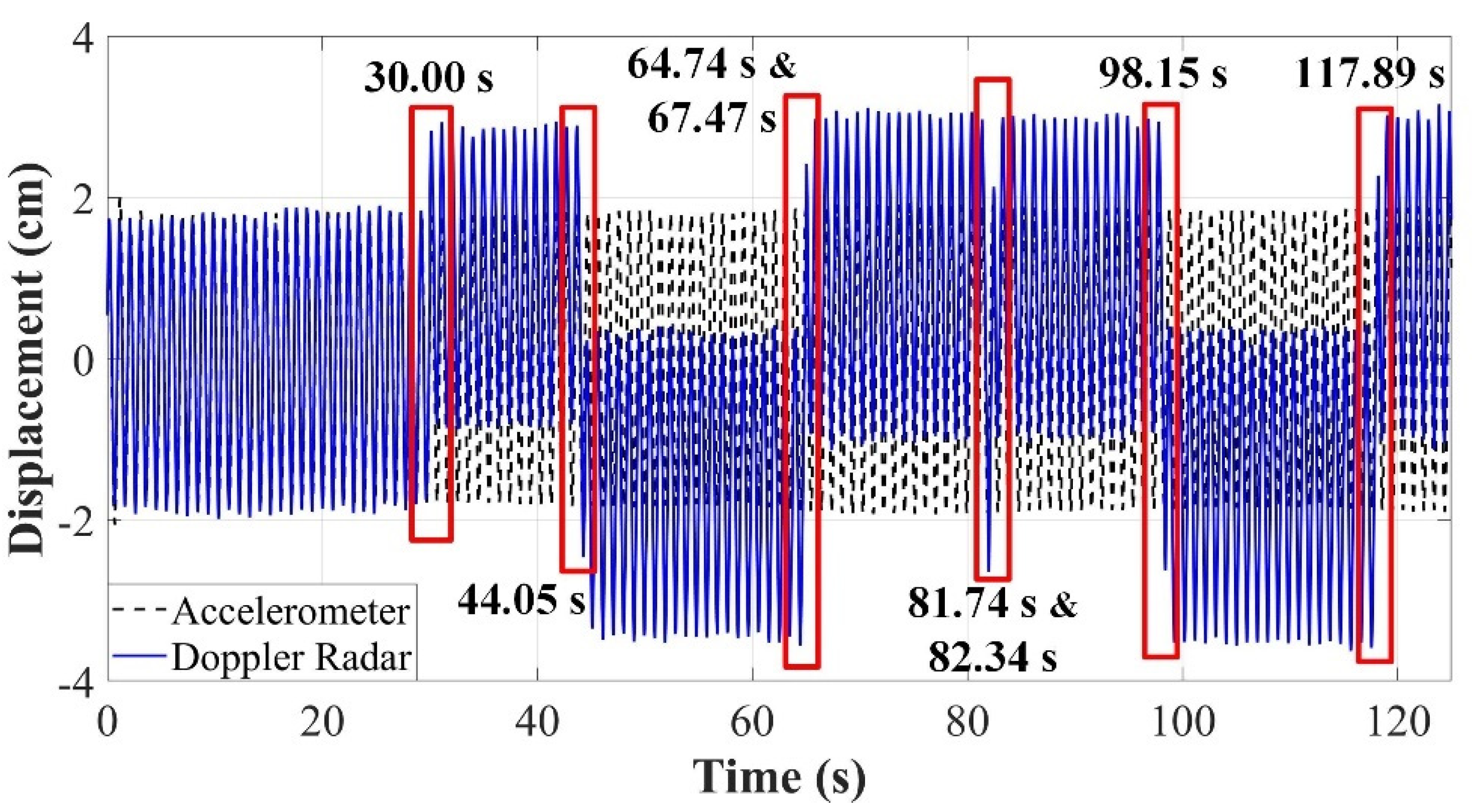

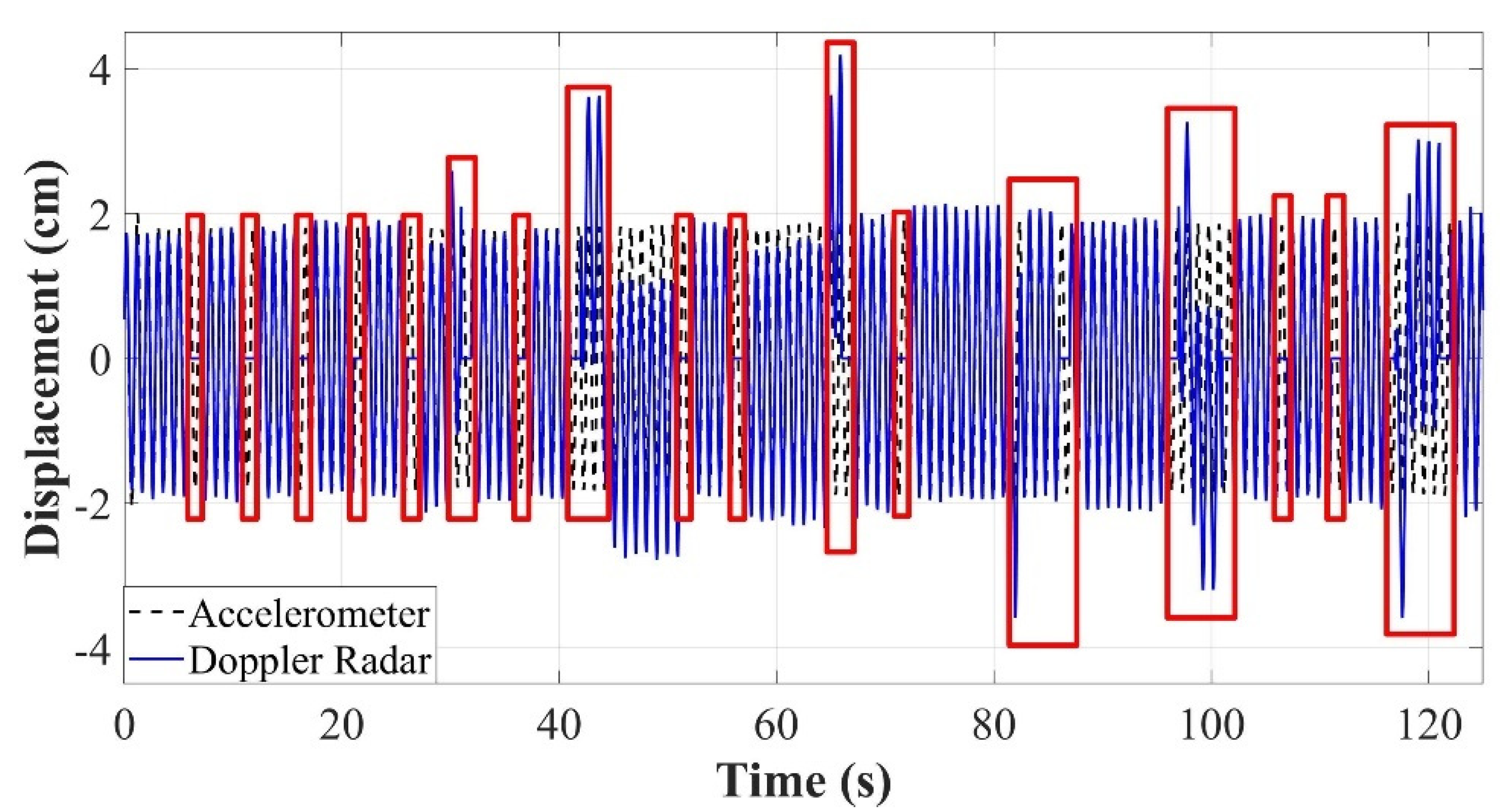
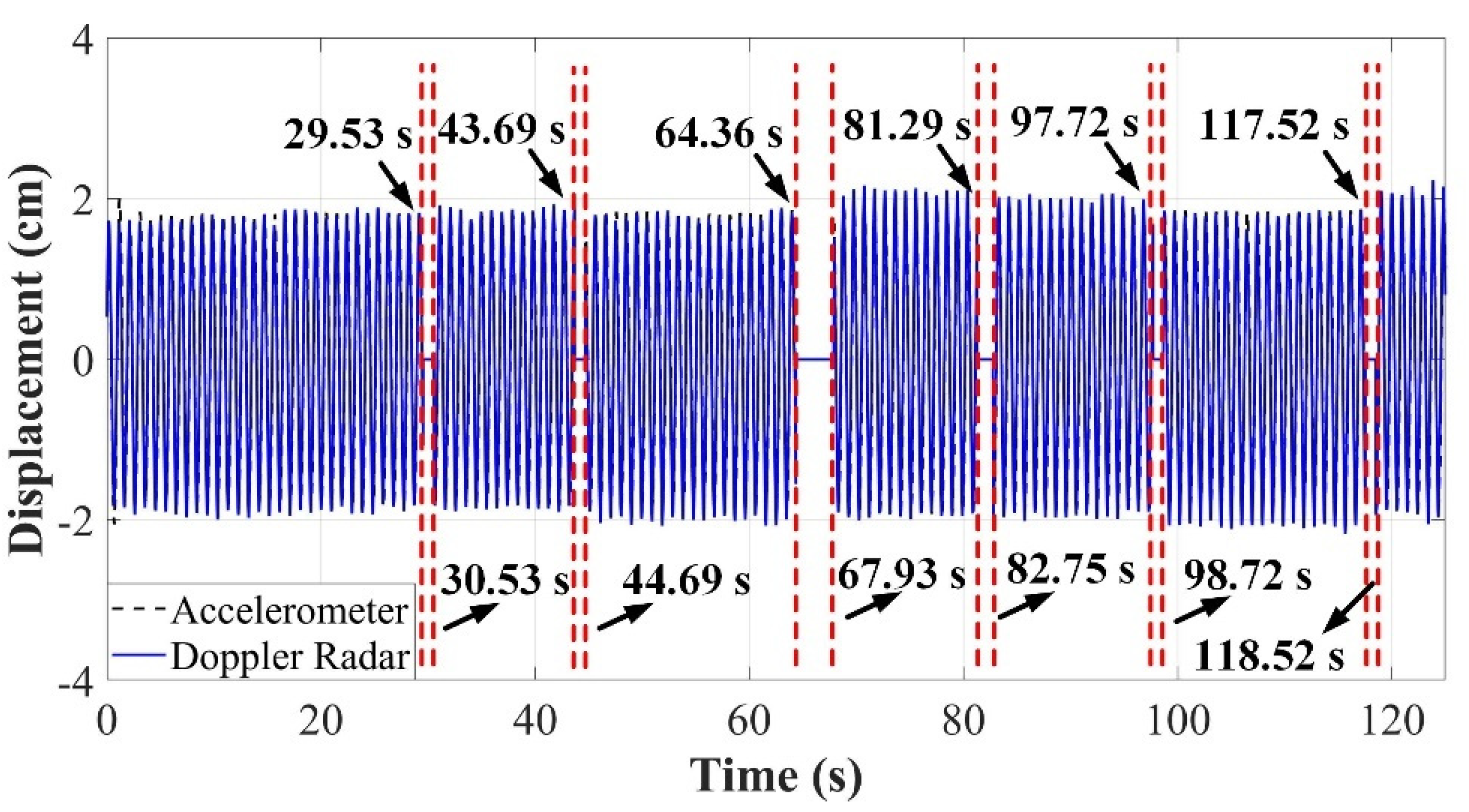
| Data Set | Length (s) | Denoising Algorithm | Denoising Algorithm RMS Error (cm) | Proposed Approach RMS Error (cm) |
|---|---|---|---|---|
| 1 | 125 | AJSPA/ALFA | 1.14/1.20 | 0.27/0.22 |
| 2 | 500 | AJSPA | 1.89 | 0.25 |
| 3 | 50 | ALFA | 0.73 | 0.28 |
| 4 | 100 | AJSPA/ALFA | 1.35/0.65 | 0.37/0.30 |
| 5 | 101 | AJSPA | 1.19 | 0.25 |
| 6 | 40 | AJSPA/ALFA | 0.86/0.74 | 0.38/0.31 |
| 7 | 100 | AJSPA | 1.19 | 0.28 |
| 8 | 50 | AJSPA | 0.87 | 0.39 |
| 9 | 250 | AJSPA | 2.01 | 0.30 |
| 10 | 200 | AJSPA | 1.28 | 0.26 |
| 11 | 100 | AJSPA/ALFA | 0.40/0.76 | 0.25/0.35 |
Publisher’s Note: MDPI stays neutral with regard to jurisdictional claims in published maps and institutional affiliations. |
© 2021 by the authors. Licensee MDPI, Basel, Switzerland. This article is an open access article distributed under the terms and conditions of the Creative Commons Attribution (CC BY) license (https://creativecommons.org/licenses/by/4.0/).
Share and Cite
Rodrigues, D.V.Q.; Zuo, D.; Li, C. A MODWT-Based Algorithm for the Identification and Removal of Jumps/Short-Term Distortions in Displacement Measurements Used for Structural Health Monitoring. IoT 2022, 3, 60-72. https://doi.org/10.3390/iot3010003
Rodrigues DVQ, Zuo D, Li C. A MODWT-Based Algorithm for the Identification and Removal of Jumps/Short-Term Distortions in Displacement Measurements Used for Structural Health Monitoring. IoT. 2022; 3(1):60-72. https://doi.org/10.3390/iot3010003
Chicago/Turabian StyleRodrigues, Davi V. Q., Delong Zuo, and Changzhi Li. 2022. "A MODWT-Based Algorithm for the Identification and Removal of Jumps/Short-Term Distortions in Displacement Measurements Used for Structural Health Monitoring" IoT 3, no. 1: 60-72. https://doi.org/10.3390/iot3010003
APA StyleRodrigues, D. V. Q., Zuo, D., & Li, C. (2022). A MODWT-Based Algorithm for the Identification and Removal of Jumps/Short-Term Distortions in Displacement Measurements Used for Structural Health Monitoring. IoT, 3(1), 60-72. https://doi.org/10.3390/iot3010003







